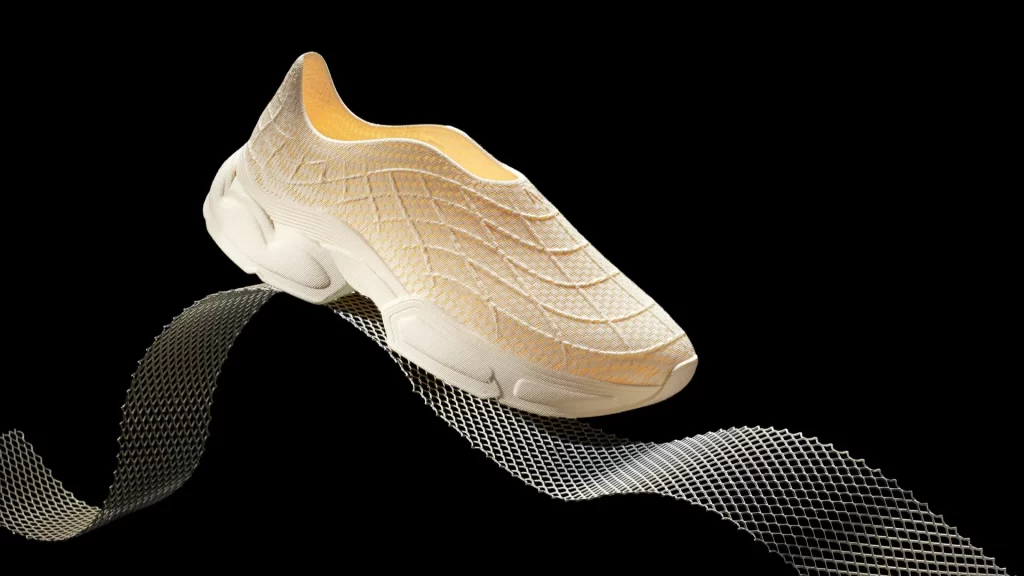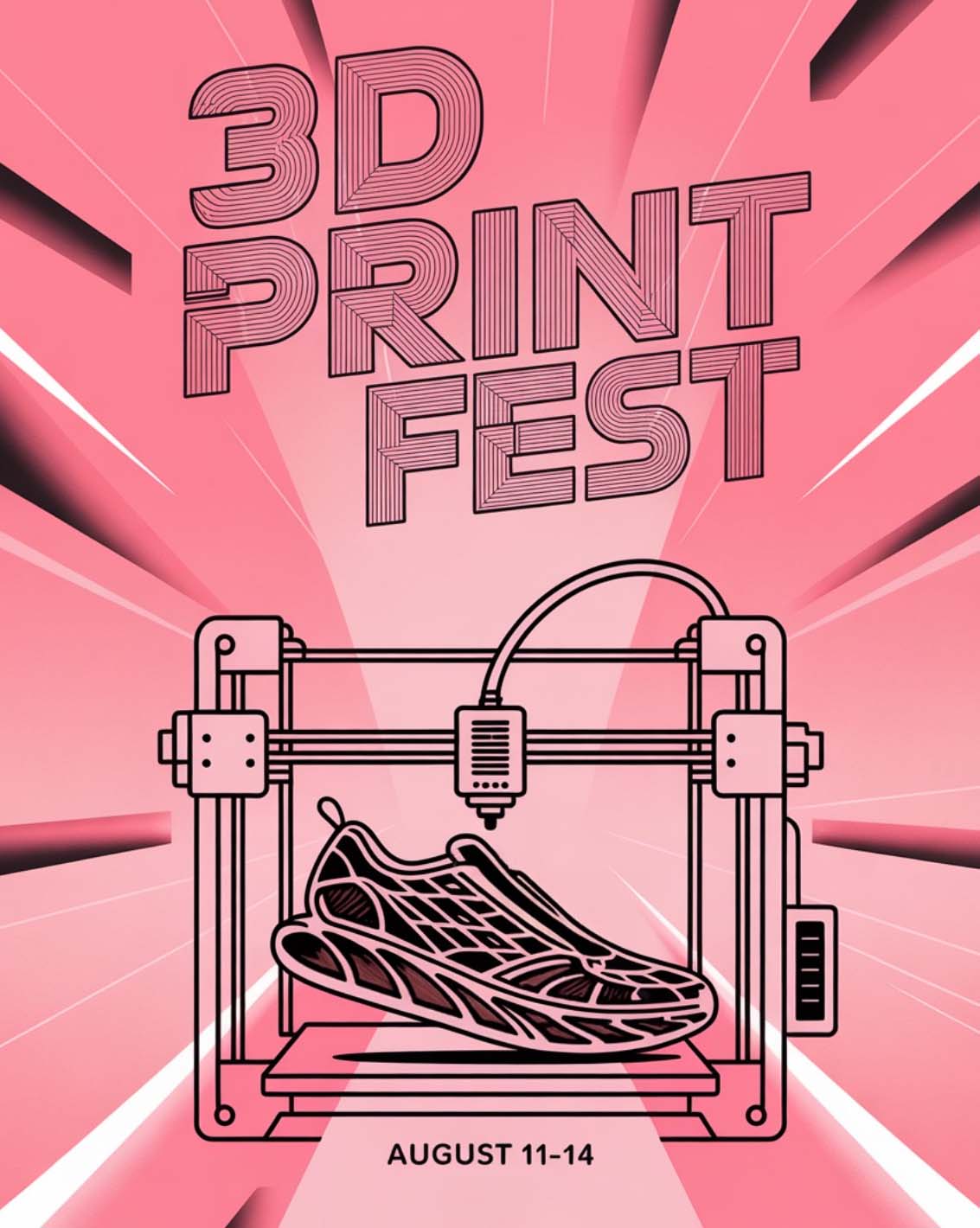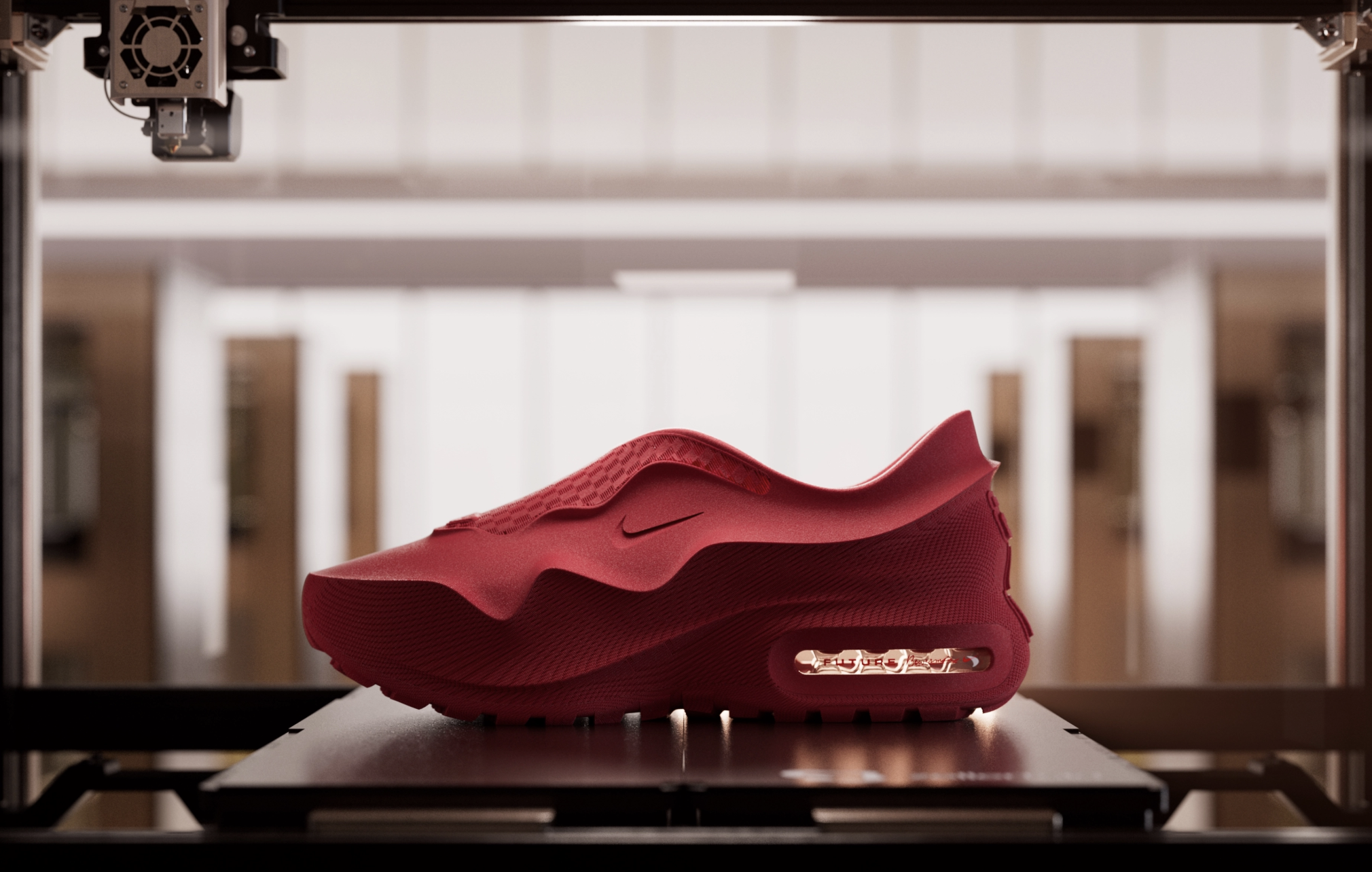Global sportswear company Nike has secured a patent for a 3D printed feature that adjusts a shoe’s fit and comfort to the individual wearer.
The process, outlined in U.S. Patent 12369691 B2, begins with a 3D scanner that captures the precise contours of the user’s feet. Using this data, a custom tubular structure is designed and 3D printed directly onto the shoe’s upper, wrapping from the heel, around the front of the shoe, and back to the heel.
A tensile strand, such as a cable or cord, is threaded through the hollow channel and secured using a locking or pulley system. By tightening the cord, users can adjust the shoe’s shape and compression to meet their needs. Because the pathway is custom-printed, the shoe delivers precise tension zones, improving both comfort and performance.
The 3D printed tubular sections can be made from flexible and rigid thermoplastics and elastomers, such as PLA, ABS, TPU, RTV silicone, and photopolymers. Unlike traditional footwear manufacturing, 3D printing enables complex, foot-specific structures without extra tooling or assembly. It also allows rapid customization, helping the global fashion brand meet the high-mix, low-volume demands of personalized production.
Nike hasn’t revealed if or how it plans to market its newly patented method. However, the patent arrives as the brand expands its presence in the 3D printed footwear space. Later this month, on August 19, Nike is set to launch its 3D printed Air Max 1000 to market.

New Nike patent promises customized comfort
Nike’s new patent was designed by the company’s VP of Footwear Design, Stefan E. Guest, Creative Director of Innovation Footwear, Matthew J. Holmes, and former innovation manager, Yoav Sterman. It was initially filed in April 2023 and granted by the United States Patent and Trademark Office (USPTO) on July 29, 2025.
According to the official document, the process begins by capturing a digital 3D scan of the customer’s feet using structured light, laser scanning, or photogrammetry technology.
The scan records the precise anatomical features of the foot, including its shape, size, and any asymmetries. Additional information, such as the customer’s motion or gait, may also be captured to understand how the foot behaves during walking or running. However, the patent emphasizes that the system can be designed from a static foot scan alone.
This collected data is used to create a customized digital model, which guides the design of the 3D-printed tubular pathway. The pathway can be aligned with selected regions of the foot to control how tension is applied, enabling the system to distribute forces evenly, create adjustable tightening points, and address specific fit or performance needs. Lastly, the process produces a customized CAD file ready for production.
Meanwhile, a Nike shoe upper is either pre-made from mesh, knit, or synthetic materials or designed to align with the lacing path. The tubular structure is then either printed directly onto the upper or produced separately and attached using adhesives, stitching, or staples. This extrusion-based method replaces traditional lace eyelets or sewn loops, simplifying the construction of the lacing system and reducing the need for separate components.
Once the tubular pathway is in place, a tensile cord is threaded through its hollow interior to form the adjustable lacing system. Its routing can vary in complexity based on the required fit or support. Importantly, the cord can be connected to an external tightening mechanism, such as a dial, lock, or pull system, allowing the wearer to adjust their shoe’s fit.
Nike’s patent also incorporates, by reference, an earlier filing, U.S. Provisional Patent Application No. 62/263,834, known as the “captive element application.” This describes techniques for inserting the tensile element during 3D printing so it is enclosed and ready for use without separate threading.
Secondary strands may branch off from the main tubular section to other areas of the shoe, including the heel or forefoot. These branches distribute tension across multiple zones, enabling the closure system to tighten not only along the main pathway but across different parts of the upper. They can be routed through additional printed tubes or guides, forming a networked fit system that secures the foot more evenly.
This design enables targeted support and customizable pressure distribution to improve comfort and fit. Nike’s patent also includes configurations where the cord is anchored at both ends to fixed points on the upper or sole.

3D printed footwear hits the shelves
3D printed footwear is an emerging trend within the fashion industry. As such, Nike is not the only company to explore new additive manufacturing technology for footwear.
Earlier this year, Ventura-based footwear startup Koobz closed a $6 million funding round to open a 10,000-square-foot factory in the United States. Here, the company plans to run a fleet of up to 900 3D printers to fabricate 400,000 pairs of shoes annually. According to Koobz, this will serve as the first phase of a larger facility, which will eventually house 4,000 to 5,000 machines to produce 2 million to 4 million pairs of 3D printed shoes every year.
In other news, Mallet London, a UK luxury footwear brand, partnered with U.S. footwear 3D printing firm Zellerfeld to launch the Nebula shoe, a rework of Mallet’s popular Neptune silhouette design.
This product marks Mallet’s first entry into 3D printing. Through the collaboration, the luxury brand aims to gain greater design flexibility, faster production, and improved material efficiency. The partnership also expands Zellerfield’s growing network, which already includes collaborations with Nike, Louis Vuitton, KidSuper, Moncler, Rains, Cro, and Pangaia.


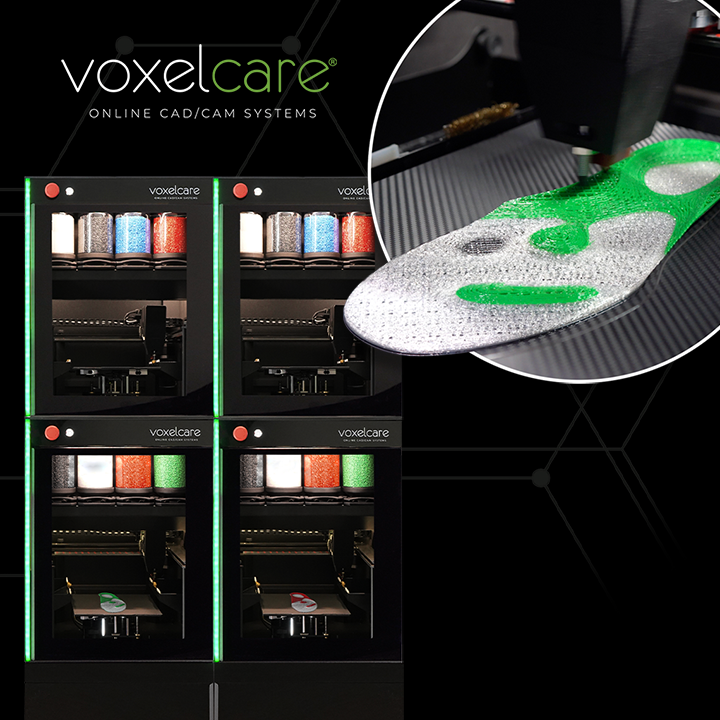

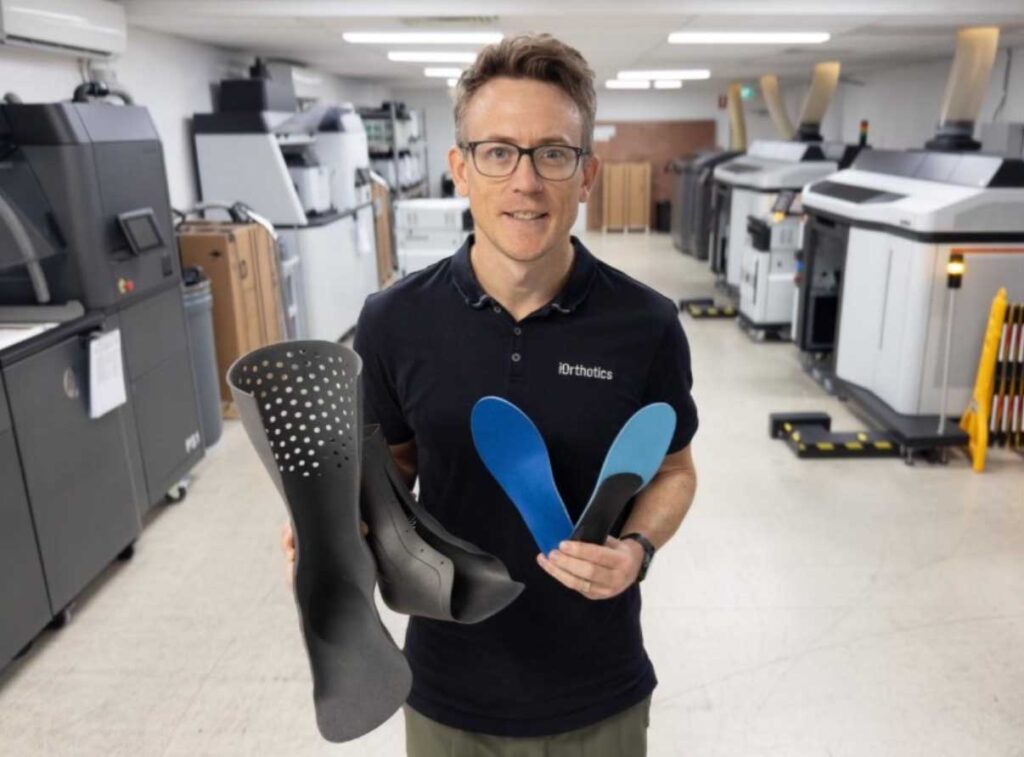


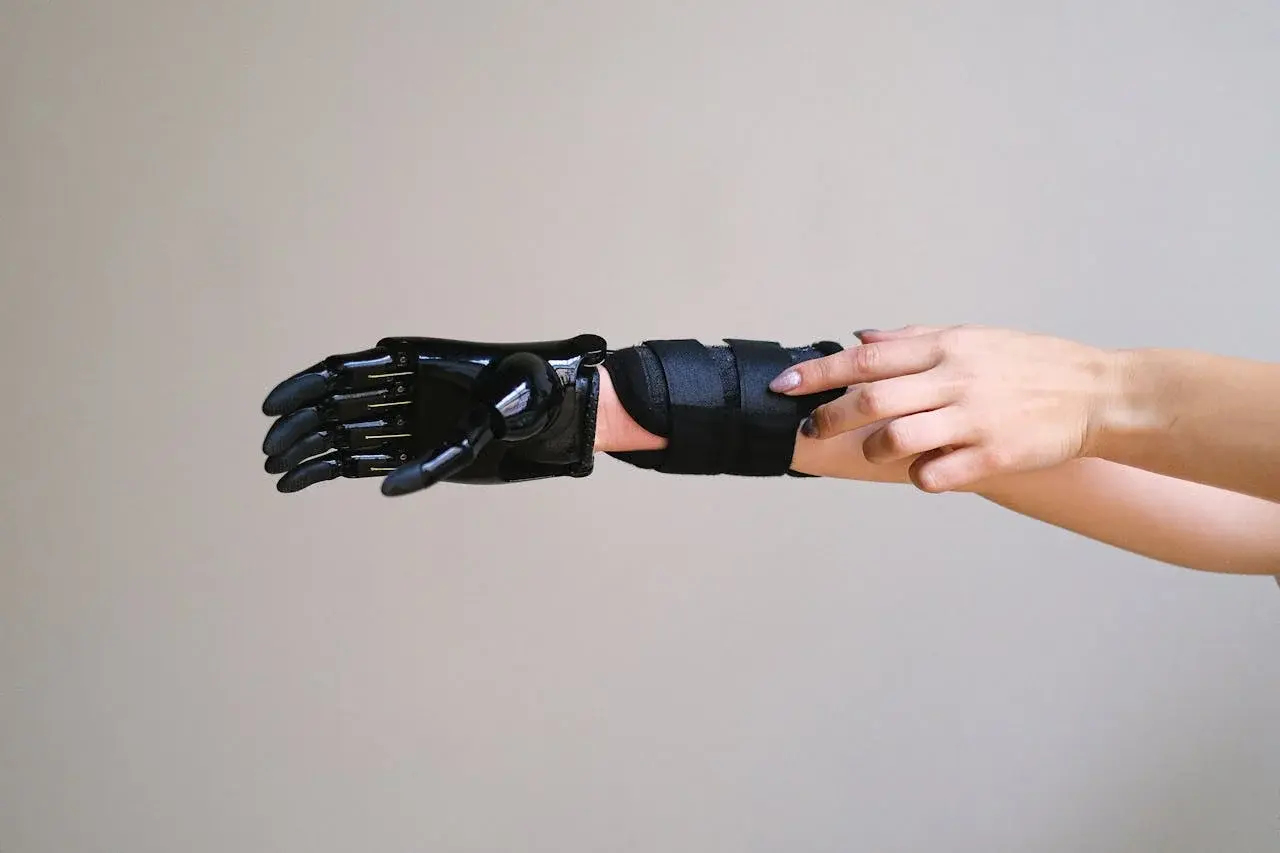
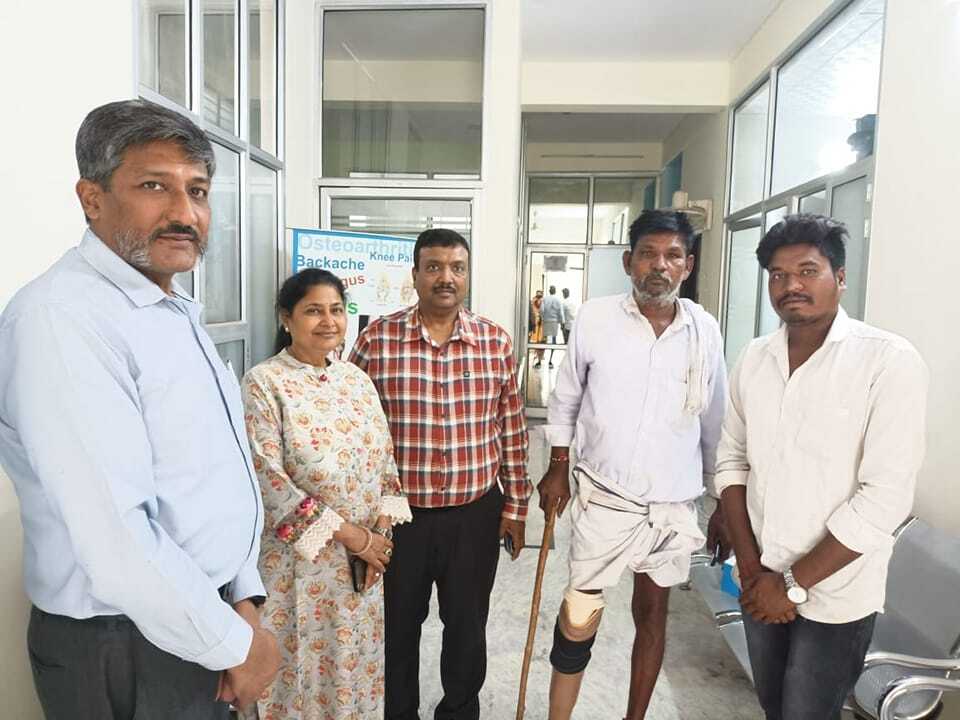


-1.png)
